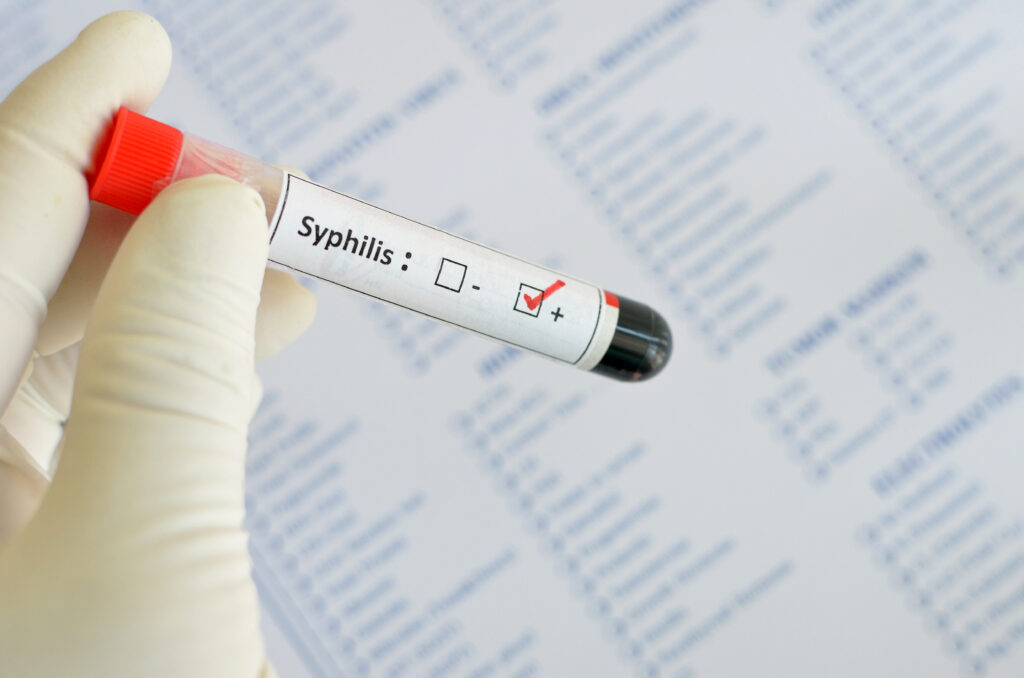
Sexually transmitted infections are rising in the U.S.—particularly syphilis, which increased by 26% from 2020 to 2021, according to preliminary data from the U.S. Centers for Disease Control and Prevention (CDC) published in September. Especially troubling is a 24% rise during that time period of congenital syphilis, which infects fetuses in the womb and can cause birth defects in or even kill infants.
Fortunately, syphilis can be easily treated and cured. However, people who are infected don’t necessarily know it—and without detection and treatment, the disease can have horrible consequences.
The Houston Health Department has reported a syphilis outbreak, with an increase of 128% among women in the city, and a ninefold increase in congenital cases in Houston and the surrounding Harris County area since 2019.
Between 2020 and 2021 alone, syphilis cases increased by 32%.
Syphilis is a bacterial disease that surfaces as genital sores but can ultimately lead to severe symptoms and death if left untreated. New syphilis infections plummeted in the US starting in the 1940s when antibiotics became widely available. They fell to their lowest ever by 1998, when fewer than 7,000 new cases were reported nationwide. The CDC was so encouraged by the progress it launched a plan to eliminate syphilis in the US.
But, by 2002, cases began rising again, largely among gay and bisexual men, and they kept going. In late 2013, CDC ended its elimination campaign in the face of limited funding and escalating cases.
Cases of congenital syphilis, which occurs when a mother passes the infection on to her baby during pregnancy, also rose by 32% — resulting in 220 stillbirths and infant deaths.
Certain regions of the country have seen an even more dramatic spike. In Texas, congenital syphilis cases have risen by 650% since 2016, per the Texas Department of Health and Human Services.
Congenital syphilis happens when a pregnant person passes the bacterial infection to their baby in the womb. Untreated congenital syphilis can lead to stillbirth or damage the baby’s organs or bones.
“It is crucial for pregnant women to seek prenatal care and syphilis testing to protect themselves from an infection that could result in the deaths of their babies,” said Marlene McNeese Ward, deputy assistant director in the Houston Health department’s Bureau of HIV/STI and Viral Hepatitis Prevention, in the news release. “A pregnant woman needs to get tested for syphilis three times during her pregnancy.”
Pregnant women should be tested for syphilis at their initial prenatal visit, during the third trimester, and at delivery, according to the release.

Why Syphilis is on the Rise
Syphilis dropped to a historic low in 2000 but has increased almost every year in the U.S. since then. Experts say that’s for several reasons, including a lack of investment in public health in the U.S. and stigma surrounding sex, says Dr. Edward Hook, a professor at the University of Alabama at Birmingham and director of the STD Control Program for the Jefferson County Department of Health. Public-health clinics, where people often get STI tests, are chronically underfunded in the U.S. The COVID-19 pandemic made the situation worse, since under-staffed public-health clinics redirected resources to cope with the outbreak. Given that syphilis has had tests and treatments for decades, says Hook, the fact that it keeps resurging “is a marker that we’re doing something wrong.”
Meanwhile, says Hook, American healthcare providers aren’t necessarily trained to
competently deal with sex or sexuality, so they often miss crucial screening opportunities. “Most doctors do not take sexual histories [of their patients], and an even smaller proportion take interval sexual histories once people have become regular patients,” says Hook. “They make wrong assumptions that married persons don’t have other sexual partners—that their patients aren’t ‘that kind of patient’ who might have other sexual partners.”
Other factors include the rise of online dating, which some experts say enables people to expand their sexual network and has been connected to riskier sexual behavior, and the growth of illicit drugs in the U.S.








